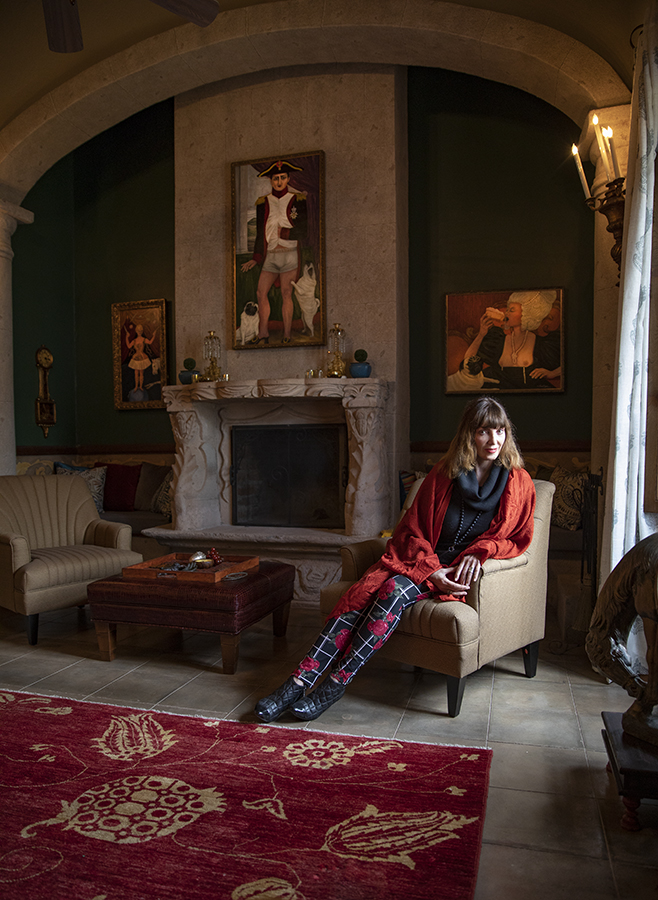
Joan of Arc reveals her panties and stares longingly at the flames, while Marie Antoinette finally eats cake and reveals perky breasts. No, I’m not caught in a surreal dream of history gone wrong. I’m amongst a multitude of oil paintings in the studio of American figurative painter Nonnie Thompson. Surrounded by sun-baked hills and fields of sunflowers the American artist and former singer-songwriter makes her part-time home in Aquitaine, an ancient region of South-west France, a one-time former Roman province and medieval duchy. At a time when most artists predict global doom she portrays the world light-heartedly, filled with dreamlike quotes and predictions. She shrugs off comparison to Kahlo and De Lempicka, Gauguin even. ‘I just paint what I see,’ she says. ‘Something catches my eye and then I just elaborate.’
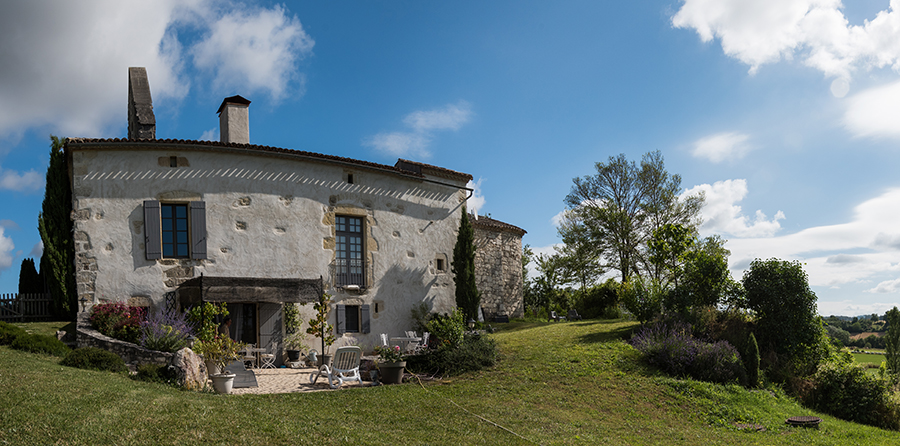
I’m served English breakfast tea and cake, while looking through immense windows onto her landscaped gardens and an ancient, fruit-laden fig tree, swarming with fruit flies and wasps. I ask if she baked the cake… ‘you must be joking,’ she laughs. ‘I mix a mean Margarita, but that’s about it.’ We’re sitting in a voluminous room filled with antiques, books and of course, paintings. I imagine medieval monks shouldering terracotta urns filled with dark wine, maybe five hundred years earlier? ‘Much older,’ she corrects me. Nonnie’s medieval presbytery, (she restored it some fifteen years ago), originated indeed much earlier, possibly the sixth century. During the renovation works stone sarcophagi were discovered beneath her bedroom and books were written about it afterwards. Does she ever feel ghostly presences? ‘All the time. You get used to it.’ A Murano chandelier hangs from the impossibly high ceilings and everywhere I look the senses are tempted by eclectic objets d’art.
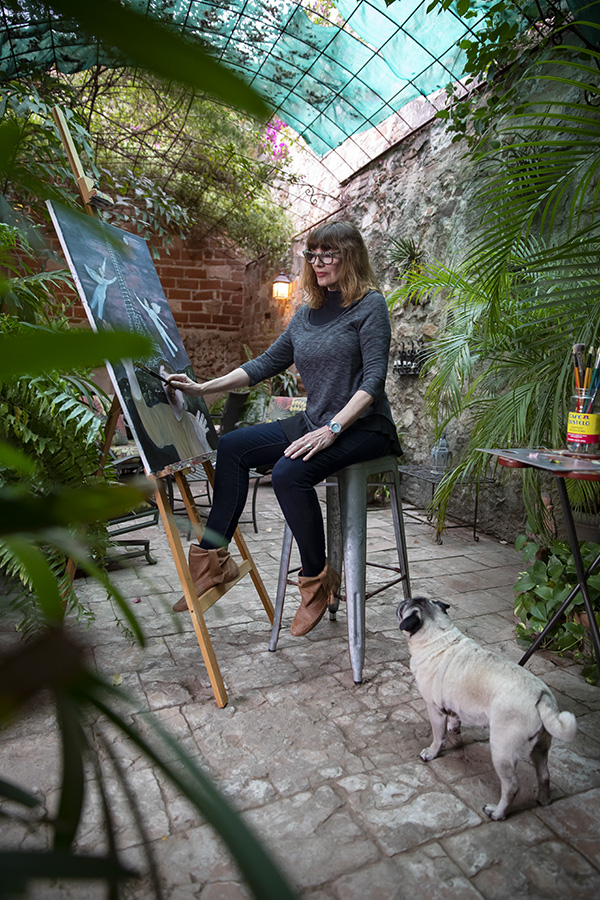
She certainly has style, probably honed by a ten-year period of project managing a multitude of house renovations in her sometime home London. The doorbell interrupts, followed by a dog’s insane barking. This is Buddha the pug, who often features in Nonnie’s paintings. I watch as she converses in fluent French with her neighbour, a farmer, who brings a daily offering of adoration. Maybe hebaked the cake? Today she receives purple tomatoes, eggs and homemade plum-jam. ‘They think I am la crazy Americaine,’she laughs, ‘but they are like family to me. Once at night my dog barked and they were at my door with pitchforks. Don’t you love that? Who needs security? I ask her what drives her work, which, frankly, goes from the crazy to the sublime. Nuns smoking dubious cigarettes and Napoleon bulging in his Calvins. Who inspires her? ‘No one in particular. Everyone. It’s just life.’ It certainly isn’t life most of us know and I imagine very few experience the world as Nonnie did. At seventeen, while at University in Mexico City, she was caught shoplifting. ‘I wanted nice things,’ she explains. She later spoke about the experience during a television interview, but she’s quick to assure me that this was only to advertise her pop band Nonnie and the Onnies. With a couple of singles under her belt she left the band to move to London. One of two record contracts kept her attention for a while, but her heart wasn’t in it. ‘Music was a big part of my life, but then I realised that few of the big stars end up happy ever after.’ She remained in London for some time afterwards and, amongst other things, wrote and produced a musical about the celebrity phenomenon. Instant Celebrity – just add water…The single I hate you Simon Cowellis still out there. ‘iTunes or somewhere,’ she laughs. ‘It was ahead of its time. Story of my life.’ When she first came to London a friend had a Damien Hirst medicine cupboard on his wall. ‘I was blown away, but not by how good it was. I thought that if this was art than anything could be. Anyone could do it.’ She had always dabbled with painting, but London’s Heatherley’s School of Fine Arts, (William Russell Flint and Kate Greenaway are former students), was a turning point for her. ‘I wanted nice paintings on my wall but couldn’t afford any good artists at the time. So, I did my own.’ She eventually left London and moved to France. ‘I still love London but it got so busy. I prefer the lifestyle of rural France.’ Maybe it gives her the peace she needs to paint? ‘I’m not sure,’ she muses. ‘I’ve just always moved around. Life is short. Why not go and see what’s out there?’
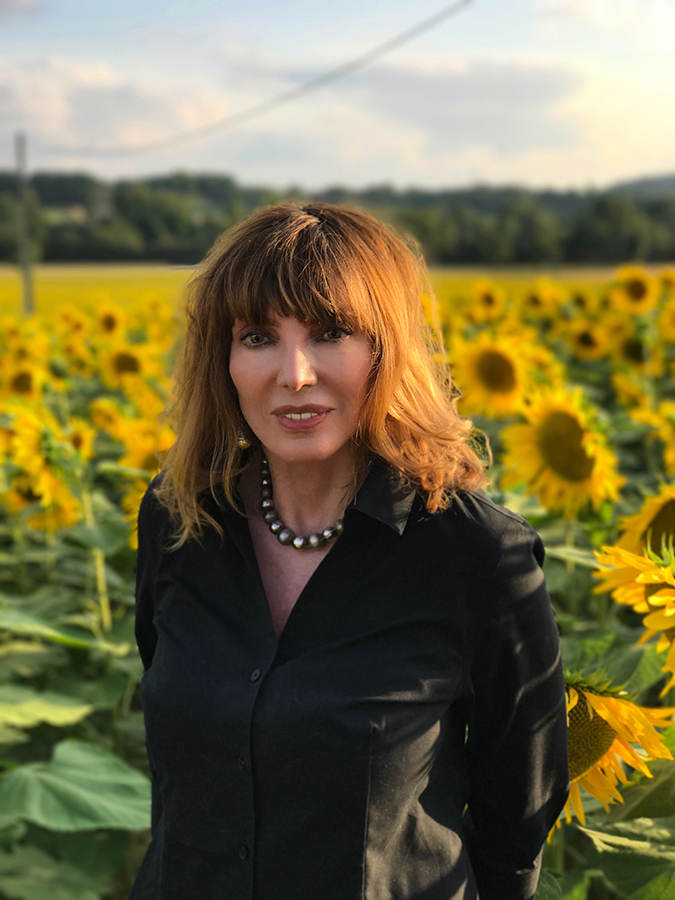
Some years and several exhibitions later, including Eggman & Walrus and Eye on the Mountain (both in Santa Fe NM) amongst them – she now paints full time and divides her time between South-western France and Alamos, Mexico. Her light-hearted look at society, as portrayed on her sometimes-huge canvasses, might fool you into thinking she lives on a cloud. In reality, this Arizona native is an expert on art history and follows current affairs with watchful eyes. What is her opinion of the world today? Would Marie-Antoinette still tell her people to eat cake? ‘You know that she never actually said that. It was probably one of her maids. Even then the press distorted the truth,’ she sighs, as her sharp, green eyes scrutinize me and remind me to better tell the truth about heron these pages. ‘That poor girl,’ she continues, ‘she was a political pawn. Nothing much has changed,’ she says firmly. Doesn’t her painting of the Austrian Empress Maria-Theresia’s daughter with her breast revealed do just that? Distort history? ‘Not at all. It’s not meant to be a history lesson. Aren’t you tired of artists who think they should educate the masses with theirpolitical views and ideas?’ She goes on to tell me that most of her paintings are bought by individuals who simply like her style. No ulterior motives then, just that? Who areher collectors? She’s coy about revealing names, but I know for some of them to be high-profile British, French and American. The telephone rings and the dog goes crazy once more. This time she speaks in Spanish. I clearly haven’t yet seen all her talents. I just about understand that workmen at her Mexican villa want permission to use real marble. She gives it, but not before asking about the builder’s 90-year old grandmother’s health. ‘The people of Alamos have been good to me,’ she explains. I sense more cake, or maybe homemade quesadillas? She seems to make friends easily, but again she just shrugs. ‘I just try and respect people wherever I go and the rest just happens. I know they think I’m a bit out there, and maybe I am.’ Some of her paintings will soon feature in an exhibition at a gallery in Alamos. The future looks bright. What’s next? ‘Who knows?’ she smiles conspiratorially. ‘I’ve been asked to do a commission. The two dogs of a singer -’ she stops herself. ‘I can’t remember her name.’ It is my turn to smile. I give her my private line, should she remember after all. The doorbell again. A large box is delivered. The two local delivery men wink at her and she rewards them with tinkling laughter. ‘They’re such flirts! More canvas,’ she explains and I follow her up a winding staircase, set into medieval stone. Her studio is high up under the eaves and bright sunlight floods through the skylights. I’m astonished at the sheer amount of finished canvases everywhere. Faces and bodies galore, many of them vaguely familiar. She points at some. ‘These are being shipped to Los Angeles tomorrow.’ Others, I’m told, are rubbish. She will overpaint them at some point and fill them with more of her quirky insights. She puts on reading glasses and I sense that our interview is coming to an end. Like that movie you love and wish it were longer, but brief as it was I enjoyed meeting her. I expected a frivolous, self-important socialite, but instead found a charming, talented woman who is nobody’s fool. An odd mix of seductive siren with a remarkably sound view of the world. I can’t wait for what she does next.
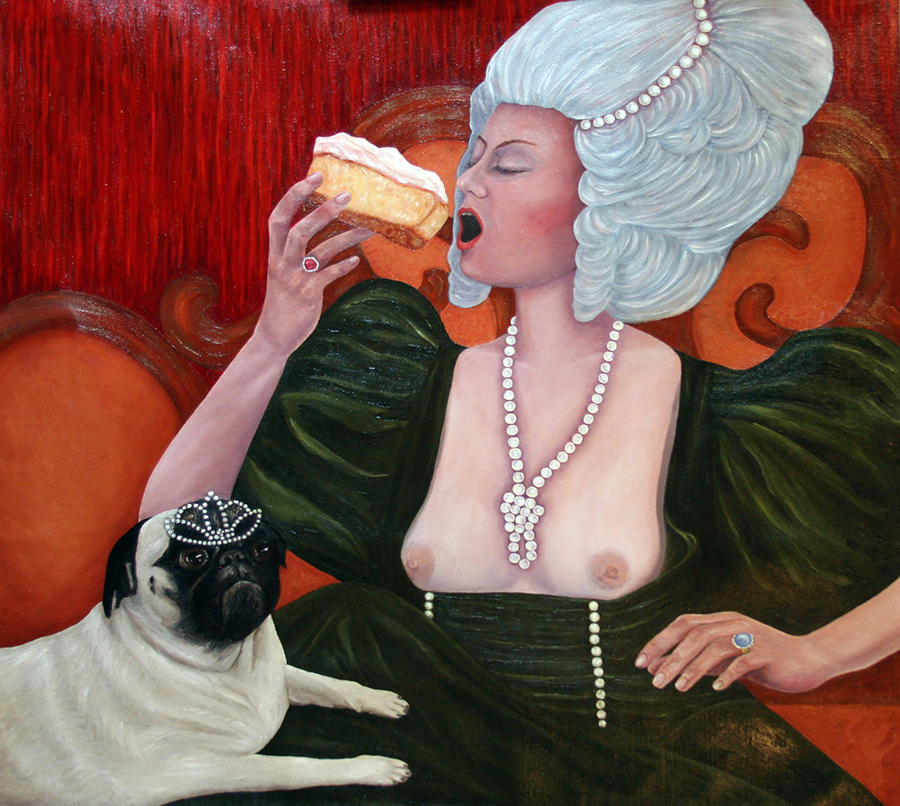
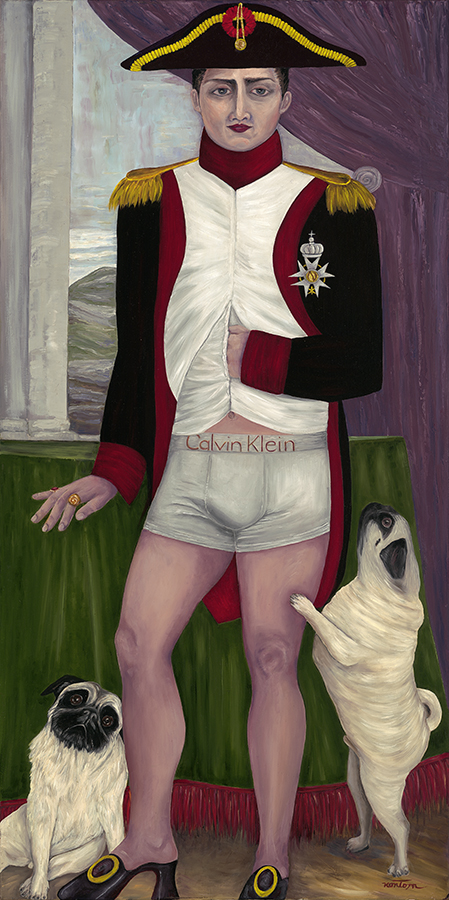
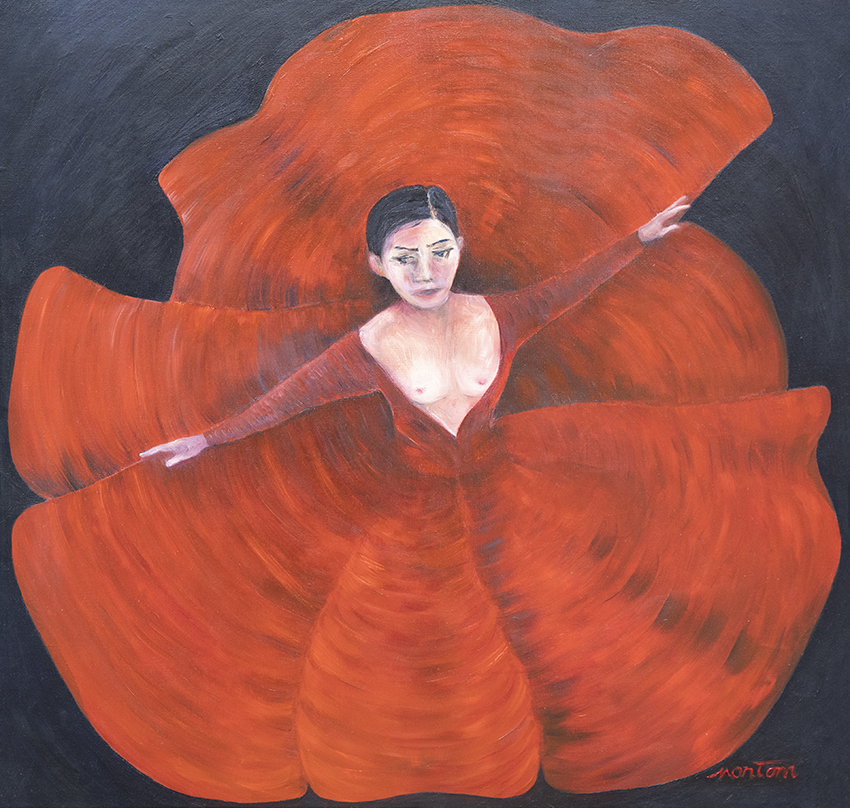
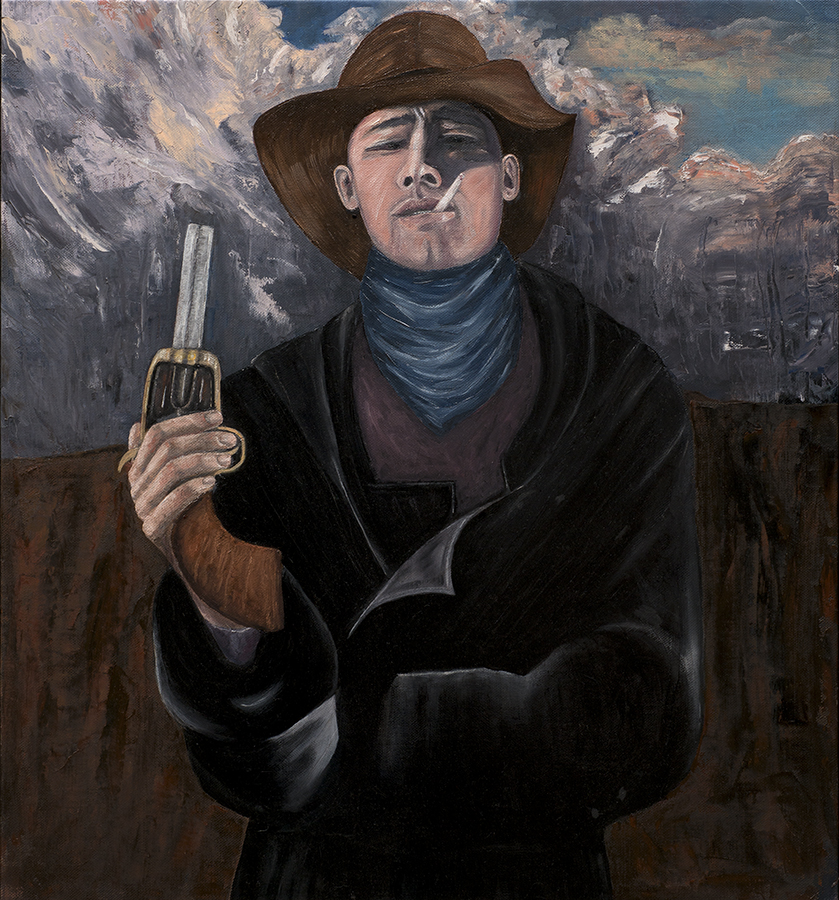
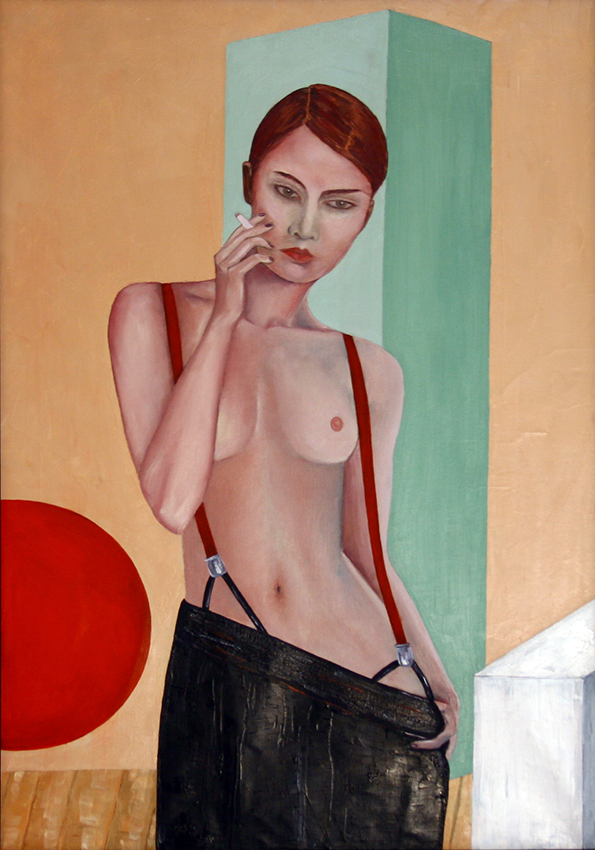
___________________________________
Contact Nonnie Thompson directly:
Mobile# +1 505 919 9433
Email: nonniethom@aol.co.uk
www.nontom.com